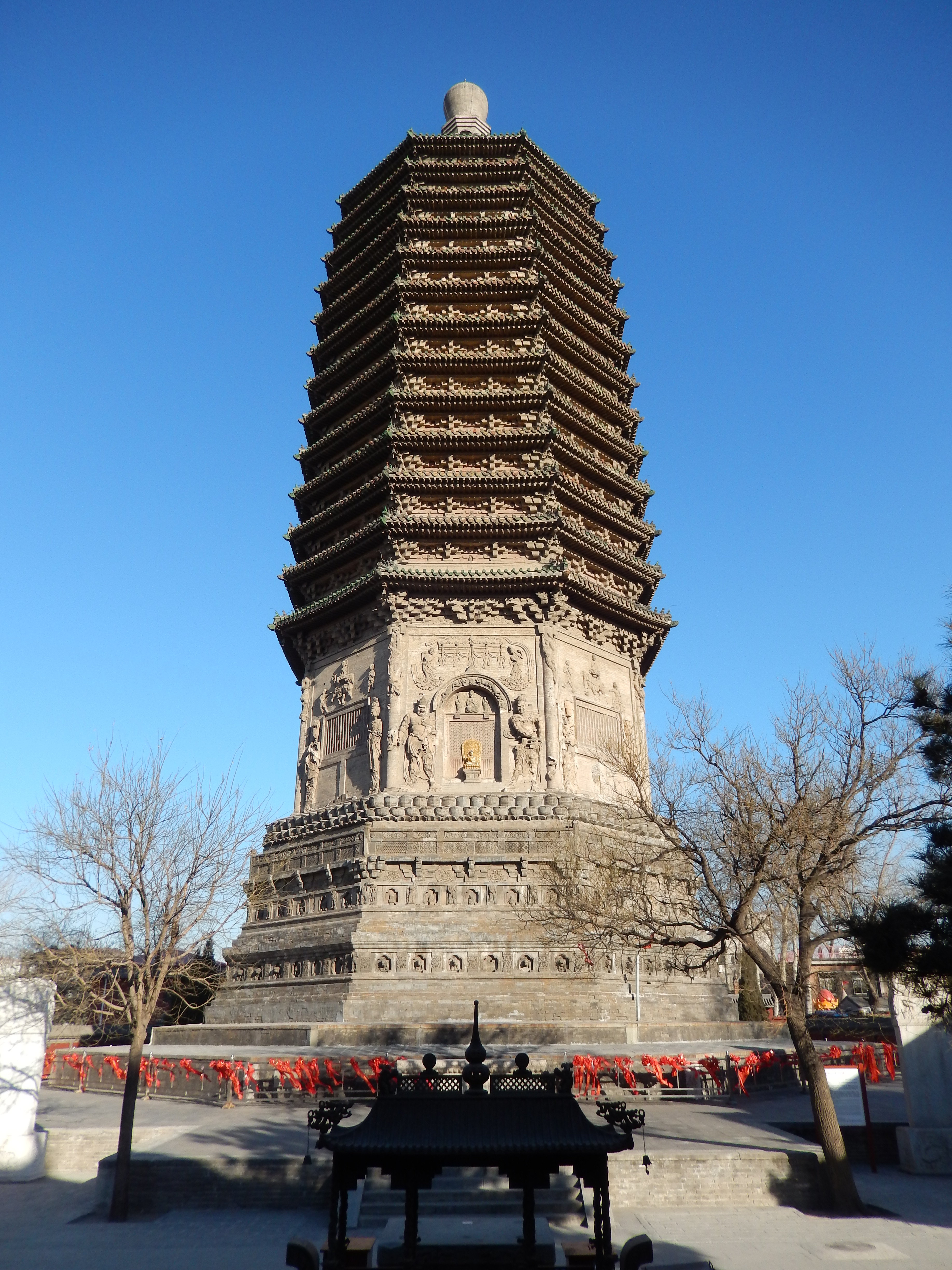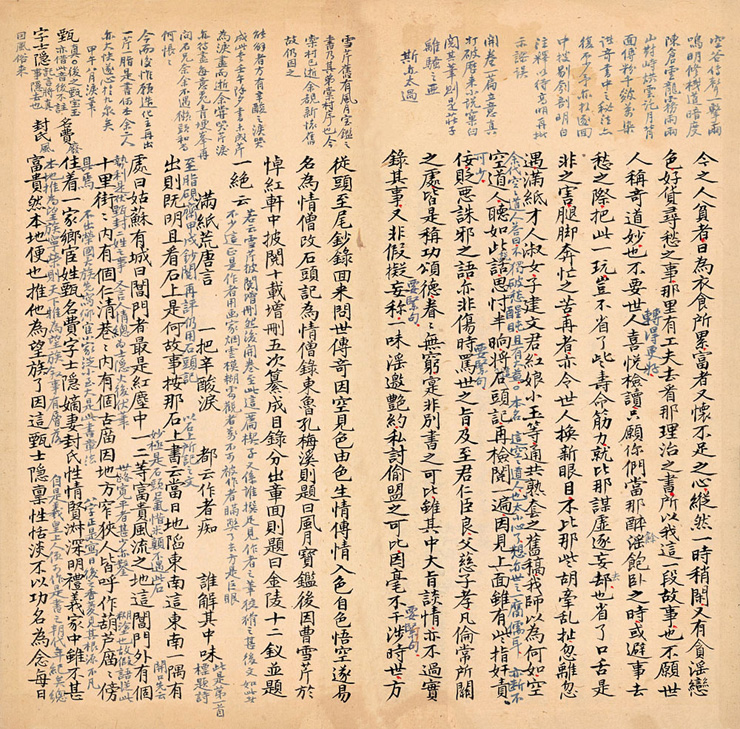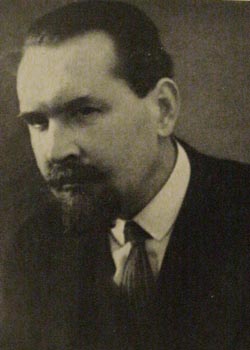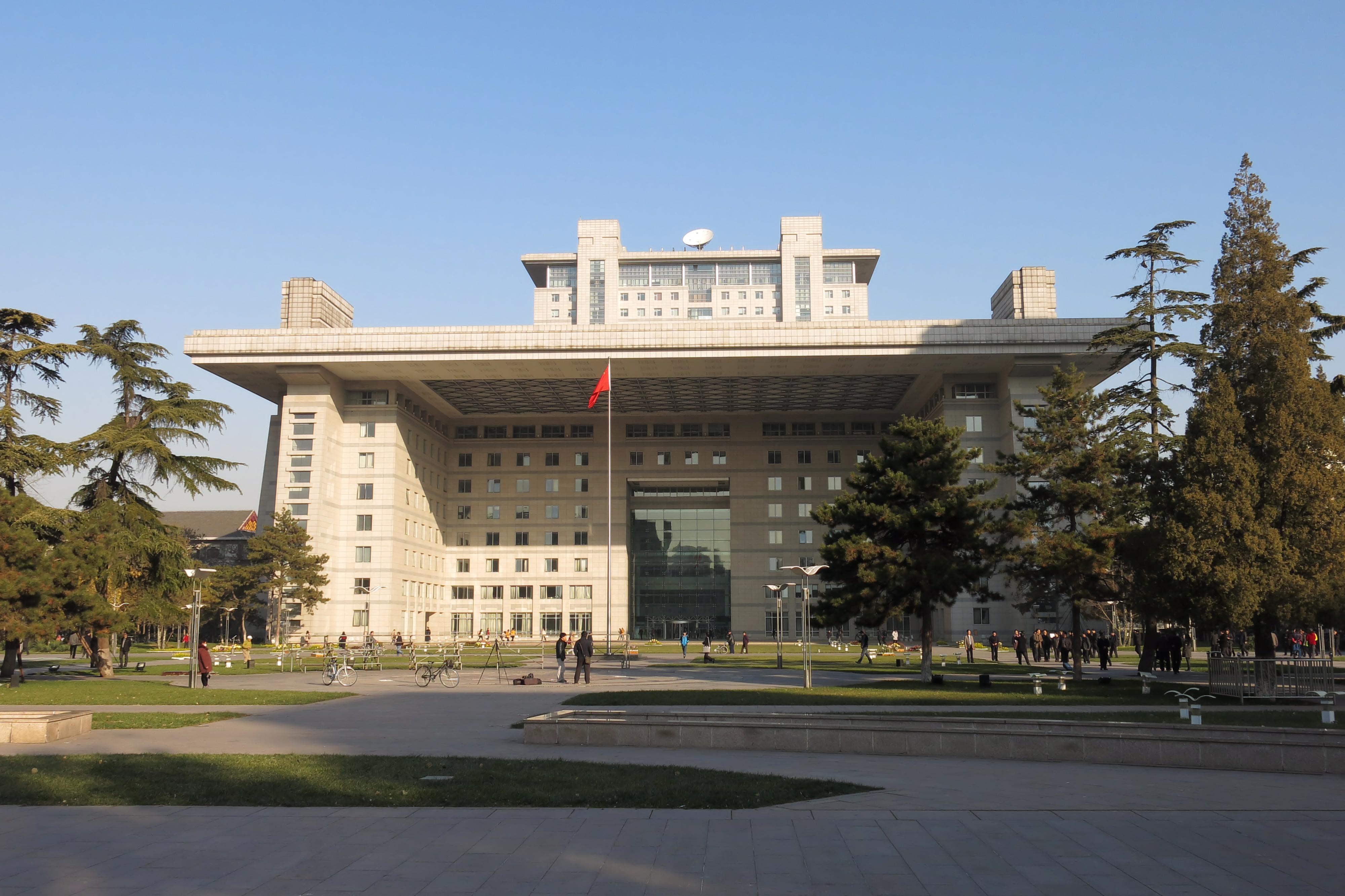|
Qigong (artist)
Qigong (, courtesy name Yuanbai , alternatively Qi Gong) (July 26, 1912 – June 30, 2005) was a renowned Chinese calligrapher, artist, painter, connoisseur and sinologist. He was an advisor for the September 3 Society, one of China's recognized political parties. Qigong was born into a Manchu family in Beijing in 1912. Both his great-grandfather and grandfather were ''Jinshi'', the highest Chinese academic title roughly equivalent to a doctoral. He was a descendant of the Yongzheng Emperor through his son Hongzhou, and therefore a member of the Aisin Gioro imperial clan. Upon coming to prominence, he declined to use both the Manchu "Aisin Gioro" or sinicized Jin surname, and went by the legal surname of "Qi" to establish a name for himself removed from that of the Imperial family. Name and ancestry Qi belonged to the Aisin Gioro clan, the Manchu rulers of the Qing dynasty in China. The character of Qi () used in Qigong's name was a generation name of the ruling Aisin-Gioro cl ... [...More Info...] [...Related Items...] OR: [Wikipedia] [Google] [Baidu] |
Beijing
} Beijing ( ; ; ), alternatively romanized as Peking ( ), is the capital of the People's Republic of China. It is the center of power and development of the country. Beijing is the world's most populous national capital city, with over 21 million residents. It has an administrative area of , the third in the country after Guangzhou and Shanghai. It is located in Northern China, and is governed as a municipality under the direct administration of the State Council with 16 urban, suburban, and rural districts.Figures based on 2006 statistics published in 2007 National Statistical Yearbook of China and available online at archive. Retrieved 21 April 2009. Beijing is mostly surrounded by Hebei Province with the exception of neighboring Tianjin to the southeast; together, the three divisions form the Jingjinji megalopolis and the national capital region of China. Beijing is a global city and one of the world's leading centres for culture, diplomacy, politics, financ ... [...More Info...] [...Related Items...] OR: [Wikipedia] [Google] [Baidu] |
Aisin-Gioro
The House of Aisin-Gioro was a Manchu people, Manchu clan that ruled the Later Jin (1616–1636), Later Jin dynasty (1616–1636), the Qing dynasty (1636–1912), and Manchukuo (1932–1945) in the history of China. Under the Ming dynasty, members of the Aisin Gioro clan served as chiefs of the Jianzhou Jurchens, one of the three major Jurchen tribes at this time. Qing bannermen passed through the gates of the Great Wall of China, Great Wall in 1644, conquered the short-lived Shun dynasty and the Southern Ming, Southern Ming dynasty. The Qing dynasty later expanded into other adjacent regions, including Xinjiang under Qing rule, Xinjiang, Tibet under Qing rule, Tibet, Mongolia under Qing rule, Outer Mongolia, and Taiwan under Qing rule, Taiwan, gaining total control of China. The dynasty reached High Qing era, its zenith during the High Qing era and under the Qianlong Emperor, who reigned from 1735 to 1796. This reign was followed by a century of gradual decline. The house lost po ... [...More Info...] [...Related Items...] OR: [Wikipedia] [Google] [Baidu] |
Qing Dynasty
The Qing dynasty ( ), officially the Great Qing,, was a Manchu-led imperial dynasty of China and the last orthodox dynasty in Chinese history. It emerged from the Later Jin dynasty founded by the Jianzhou Jurchens, a Tungusic-speaking ethnic group who unified other Jurchen tribes to form a new "Manchu" ethnic identity. The dynasty was officially proclaimed in 1636 in Manchuria (modern-day Northeast China and Outer Manchuria). It seized control of Beijing in 1644, then later expanded its rule over the whole of China proper and Taiwan, and finally expanded into Inner Asia. The dynasty lasted until 1912 when it was overthrown in the Xinhai Revolution. In orthodox Chinese historiography, the Qing dynasty was preceded by the Ming dynasty and succeeded by the Republic of China. The multiethnic Qing dynasty lasted for almost three centuries and assembled the territorial base for modern China. It was the largest imperial dynasty in the history of China and in 1790 ... [...More Info...] [...Related Items...] OR: [Wikipedia] [Google] [Baidu] |
Forbidden City
The Forbidden City () is a palace complex in Dongcheng District, Beijing, China, at the center of the Imperial City of Beijing. It is surrounded by numerous opulent imperial gardens and temples including the Zhongshan Park, the sacrificial Imperial Ancestral Temple, the Beihai Park, and the Jingshan Park. It is officially administered by the Palace Museum. The Forbidden City was constructed from 1406 to 1420, and was the former Chinese imperial palace and winter residence of the Emperor of China from the Ming dynasty (since the Yongle Emperor) to the end of the Qing dynasty, between 1420 and 1924. The Forbidden City served as the home of Chinese emperors and their households and was the ceremonial and political center of the Chinese government for over 500 years. Since 1925, the Forbidden City has been under the charge of the Palace Museum, whose extensive collection of artwork and artifacts were built upon the imperial collections of the Ming and Qing dynasties. ... [...More Info...] [...Related Items...] OR: [Wikipedia] [Google] [Baidu] |
Dream Of The Red Chamber
''Dream of the Red Chamber'' (''Honglou Meng'') or ''The Story of the Stone'' (''Shitou Ji'') is a novel composed by Cao Xueqin in the middle of the 18th century. One of the Four Great Classical Novels of Chinese literature, it is known for its psychological scope, and its observation of the worldview, aesthetics, life-styles, and social relations of 18th-century China. The intricate strands of its plot depict the rise and decline of a family much like Cao’s own and, by extension, of the dynasty itself. Cao depicts the power of the father over the family, but the novel is intended to be a memorial to the women he knew in his youth: friends, relatives and servants. At a more profound level, the author explores religious and philosophical questions, and the writing style includes echoes of the plays and novels of the late Ming, as well as poetry from earlier periods. Cao apparently began composing it in the 1740s and worked on it until his death in 1763 or 1764. Copies of h ... [...More Info...] [...Related Items...] OR: [Wikipedia] [Google] [Baidu] |
Semantics
Semantics (from grc, σημαντικός ''sēmantikós'', "significant") is the study of reference, meaning, or truth. The term can be used to refer to subfields of several distinct disciplines, including philosophy, linguistics and computer science. History In English, the study of meaning in language has been known by many names that involve the Ancient Greek word (''sema'', "sign, mark, token"). In 1690, a Greek rendering of the term ''semiotics'', the interpretation of signs and symbols, finds an early allusion in John Locke's ''An Essay Concerning Human Understanding'': The third Branch may be called [''simeiotikí'', "semiotics"], or the Doctrine of Signs, the most usual whereof being words, it is aptly enough termed also , Logick. In 1831, the term is suggested for the third branch of division of knowledge akin to Locke; the "signs of our knowledge". In 1857, the term '' semasiology'' (borrowed from German ''Semasiologie'') is attested in Josiah W. Gibbs ... [...More Info...] [...Related Items...] OR: [Wikipedia] [Google] [Baidu] |
Phonology
Phonology is the branch of linguistics that studies how languages or dialects systematically organize their sounds or, for sign languages, their constituent parts of signs. The term can also refer specifically to the sound or sign system of a particular language variety. At one time, the study of phonology related only to the study of the systems of phonemes in spoken languages, but may now relate to any linguistic analysis either: Sign languages have a phonological system equivalent to the system of sounds in spoken languages. The building blocks of signs are specifications for movement, location, and handshape. At first, a separate terminology was used for the study of sign phonology ('chereme' instead of 'phoneme', etc.), but the concepts are now considered to apply universally to all human languages. Terminology The word 'phonology' (as in 'phonology of English') can refer either to the field of study or to the phonological system of a given language. This is one ... [...More Info...] [...Related Items...] OR: [Wikipedia] [Google] [Baidu] |
Wang Xianzhi (calligrapher)
Wang Xianzhi (, 344–386), courtesy name Zijing (子敬), was a famous Chinese calligrapher of the Eastern Jin dynasty. He was the seventh and youngest son of the famed Wang Xizhi. Wang inherited his father's talent for the art, and although several of his siblings were notable calligraphers, only Xianzhi was able to eventually equal his father in status, with the pair later attaining the appellation, "The Two Wangs (二王 èr wáng)." Wang Xianzhi's (also referred to as "Wang Junior" 小王) style is substantially more fluid and stylistic than that of his father ("Wang Senior" 大王), whose structural firmness nonetheless remains unrivaled. Xianzhi's most celebrated accomplishment is his refinement of the "running-cursive" script (行草), a writing style which, as the name implies, combines features of both the cursive and running scripts. The Duck-Head Pill Note is an outstanding example of this technique. Another of Xianzhi's accomplishments is the extensive application of ... [...More Info...] [...Related Items...] OR: [Wikipedia] [Google] [Baidu] |
Wang Xizhi
Wang Xizhi (; ; 303 AD361 AD) was a Chinese calligrapher, politician, general and writer during the Jin dynasty. He was best known for his mastery of Chinese calligraphy. Wang is sometimes regarded as the greatest Chinese calligrapher in Chinese history, and was a master of all forms of Chinese calligraphy, especially the running script. He is known as one of the Four Talented Calligraphers () in Chinese calligraphy. Emperor Taizong of Tang admired his works so much that Wang's work, the ''Preface to the Poems Composed at the Orchid Pavilion'' (or ''Lantingji Xu'') was said to be buried with the emperor in his mausoleum. His artistic talent continues to be held in high esteem in modern China, and remains an influential figure in East Asian calligraphy, particularly Japanese calligraphy. Biography Born in Linyi, Langya Commandery (modern Linyi, Shandong), Wang belonged to the powerful and prominent Wang clan of Langya. In his youth, the War of the Eight Princes and subsequent ... [...More Info...] [...Related Items...] OR: [Wikipedia] [Google] [Baidu] |
Peking University
Peking University (PKU; ) is a public research university in Beijing, China. The university is funded by the Ministry of Education. Peking University was established as the Imperial University of Peking in 1898 when it received its royal charter by the Guangxu Emperor. A successor of the older '' Guozijian'' Imperial College, the university's romanized name 'Peking' retains the older transliteration of 'Beijing' that has been superseded in most other contexts. Perennially ranked as one of the top academic institutions in China and the world; as of 2021 Peking University was ranked 16th globally and 1st in the Asia-Pacific & emerging countries by Times Higher Education, while as of 2022 it was ranked 12th globally and 1st in Asia by QS University Rankings. Throughout its history, Peking University has had an important role "at the center of major intellectual movements" in China. Abolished of its status as a royal institution after the fall of the Qing dynasty and the Xinhai ... [...More Info...] [...Related Items...] OR: [Wikipedia] [Google] [Baidu] |
Chinese Classics
Chinese classic texts or canonical texts () or simply dianji (典籍) refers to the Chinese texts which originated before the imperial unification by the Qin dynasty in 221 BC, particularly the "Four Books and Five Classics" of the Neo-Confucian tradition, themselves a customary abridgment of the " Thirteen Classics". All of these pre- Qin texts were written in classical Chinese. All three canons are collectively known as the classics ( t , s , ''jīng'', lit. "warp"). The term Chinese classic texts may be broadly used in reference to texts which were written in vernacular Chinese or it may be narrowly used in reference to texts which were written in the classical Chinese which was current until the fall of the last imperial dynasty, the Qing, in 1912. These texts can include ''shi'' (, historical works), ''zi'' (, philosophical works belonging to schools of thought other than the Confucian but also including works on agriculture, medicine, mathematics, astrono ... [...More Info...] [...Related Items...] OR: [Wikipedia] [Google] [Baidu] |
Beijing Normal University
Beijing Normal University (BNU, ), colloquially known as Beishida (), is a public research university located in Beijing, China, with a strong emphasis on humanities and sciences. It is one of the oldest and most prestigious universities in China as part of Class A Double First Class University in the Double First Class University Plan and was designated by the Chinese Ministry of Education as a member of Project 985 and Project 211. "Normal school" refers to an institution that trained schoolteachers in the early 20th century. The title is preserved in the names of Chinese institutions after they developed into comprehensive universities. It also reflects BNU's heritage as a Faculty of Education member of the Imperial University of Peking which was established as China's first modern university. BNU ranked first among universities that originated as “normal schools”. The Faculty of Education is considered the best in China according to several widely cited internation ... [...More Info...] [...Related Items...] OR: [Wikipedia] [Google] [Baidu] |






